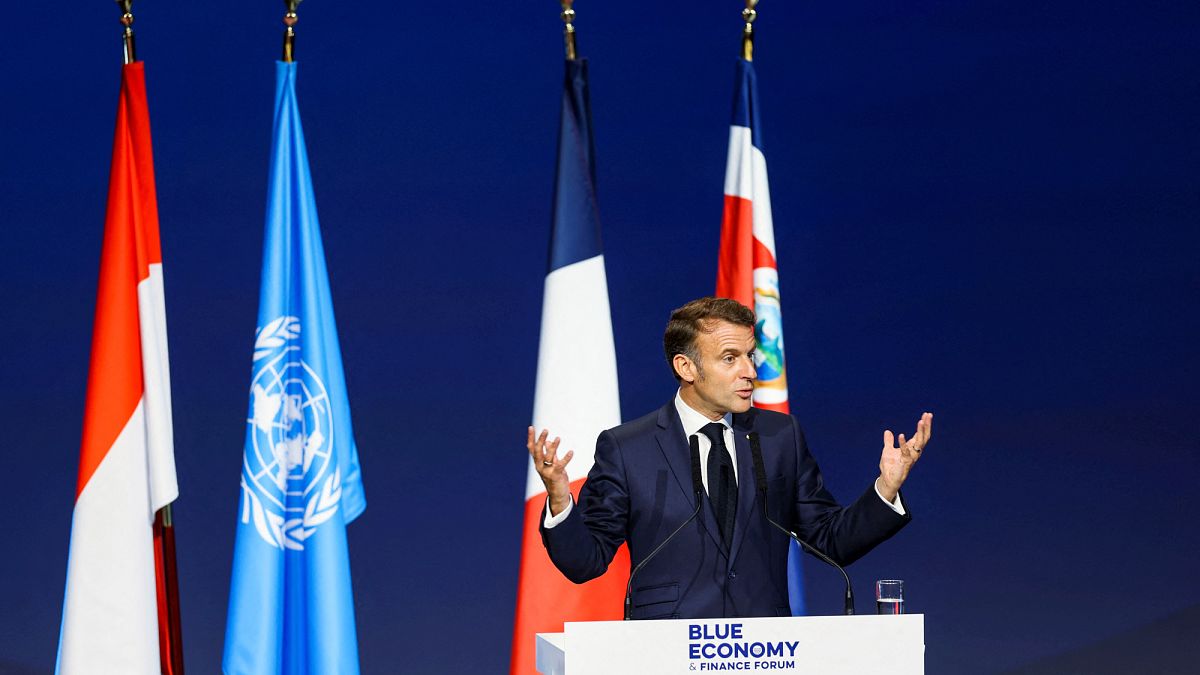Fitness
Follow a fitness regime daily: Regular exercise can help develop better tolerance for pain, says study

To conduct their study, the researchers used data from 10,732 participants who’d taken part in the Tromso study – a large study on health and disease that was conducted in Tromso, Norway. The participants were aged 30 to 87, and just over half were women.
Every participant was assessed twice, eight years apart. During each assessment, they answered questions about their physical activity levels and took part in a cold pressor test. This is a common method used by researchers to induce pain in a laboratory environment. Participants place their hand in 3 degree Celsius water for as long as they can. The longer they keep their hand in the water, the greater their pain tolerance.
The researchers found that the more active the participants were, the longer they could keep their hand in the water. In fact, those who were categorised as being very active were able to keep their hand in the water for 115.7 seconds on average compared with 99.4 seconds for the least-active participants. The researchers also found that participants who stayed active or became even more active were able to perform better on average during the second test compared with those who remained inactive.
It’s worth noting, however, that over the eight years between assessments, everyone became less tolerant of pain on average. This change was roughly the same for everyone – whether people were couch potatoes or avid marathoners. But active participants still had higher pain tolerance compared with inactive people, despite this decrease. It’s uncertain why people became less tolerant to pain over time, but it could be because of ageing.
However, we must be cautious when interpreting the findings. Assessing physical activity via self-report is tricky business as participants may be tempted to report they’re more physically active than they are in reality. They may also have trouble remembering their physical activities, which can lead to both over- and under-reporting.
The participants were also only asked about their physical activity over the last 12 months, leaving the remaining seven years between assessments unaccounted for in the analyses. This means someone may be classed as sedentary despite having engaged in vigorous physical activity for seven out of the eight years. Such cases may skew the results and lead to a misinterpretation of the outcomes. Still, this study joins a growing body of research which has shown the benefits of physical activity on pain tolerance.
Exercise & Pain
Given these results, it’s interesting to speculate how physical activity may affect pain tolerance. While we do have some ideas why this link exists, we’re still a long way from knowing the complete picture.
One possible explanation for this link could be due to some of the physiological changes that happen after exercising – such as exercise-induced “hypoalgesia”. This essentially refers to a reduction in pain and sensitivity that people report during and following exercise. A good example of this is the runner’s high, when the body releases its own opioids, called endorphins. These hormones bind to the same receptors as opioids, producing a similar pain-reducing effect.
Yet endorphins are only part of the magic behind the runner’s high. Research suggests the endocannabinoid system has similar effects following exercise. This system is a vast cell-signalling network, comprised largely of endocannabinoids and their receptors. These are neurotransmitters produced by the body that are involved in many processes, including regulating sleep, appetite and mood.
Research also suggests they can help us tolerate pain better. Studies show that exercise can increase levels of endocannabinoids, which may in turn improve our pain tolerance overall.
But pain is not a purely physiological phenomenon. It’s an experience, and as such, is subject to our psychology as much as our physiology.
It could be argued that exercise brings with it some level of pain – from stitches and muscle aches to that burning sensation you feel when trying to squeeze out that last rep.
Because of this, exercise has the power to change the way we appraise pain. Exposing ourselves to these unpleasant experiences during a workout can help build resilience – our ability to function in the face of stressful events, such as pain. Physical activity can also build self-efficacy – our belief that we can do certain things despite pain.
Physical activity also improves our mood, which in turn makes us more resistant to pain. Furthermore, exercise helps us learn how to distract ourselves from pain – such as when we listen to music while running. Regular physical activity can help us overcome fear of pain and movement and allows us to be prepared for the experience of pain. Unsurprisingly, many of these techniques are used as the basis for pain management techniques.
While there are still many questions that future research will need to answer, this research reminds us just how beneficial exercise is to us – even in ways we wouldn’t expect. These findings may also add to a growing body of evidence that argues exercise may help manage chronic pain.

Fitness
Exercise should keep your heart safe but professional bodybuilders are dying at fivefold higher rates

Professional bodybuilders often strain their hearts through extreme training, rapid weight loss, and dehydration. Bulking-cutting cycles, harsh diets, and intense regimens can cause heart rhythm issues and long-term cardiovascular damage


Synopsis: The sudden death of Mr. India Senthil Kumaran Selvarajan highlights a disturbing trend in Indian bodybuilding: young, peak-condition athletes dying from heart attacks and organ failure, often linked to suspected steroid abuse. Similar fates befell Akash from Tamil Nadu and champion Dheeraj Dahiya. Even fitness icon Puneeth Rajkumar’s cardiac arrest in 2021 underscores hidden health risks in extreme fitness pursuits.
The promising career of Senthil Kumaran Selvarajan, India’s Mr. India titleholder, ended abruptly with a fatal heart attack. He was young, seemingly at peak physical condition, and represented the pinnacle of bodybuilding achievement in the country. His death wasn’t an isolated tragedy.
Akash, a 25-year-old bodybuilder and gym trainer from Avadi, Tamil Nadu, collapsed while preparing for competition. Doctors discovered multiple organ failure—his heart, kidneys, and liver had all shut down, likely from what they suspected was excessive steroid and supplement abuse. Another champion, Dheeraj Dahiya, who held multiple prestigious titles including Mr. India and Mr. North India, died suddenly from a reported heart attack, joining a growing list of elite athletes whose pursuit of physical perfection ended in premature death.
Even beyond competitive bodybuilding, the fitness world was shaken when Kannada superstar Puneeth Rajkumar, renowned for his fitness regimen, died of sudden cardiac arrest in 2021. Though not a competitive bodybuilder, his case drew national attention to cardiovascular risks among seemingly healthy, fit individuals.
These Indian cases reflect a troubling global pattern that has now been quantified by groundbreaking research. A comprehensive 16-year study published in the European Heart Journal has exposed alarming mortality rates among competitive bodybuilders worldwide, with sudden cardiac death claiming 38 percent of fatalities in a sport increasingly scrutinized for its hidden health risks.
The global study that confirms the crisis
Dr. Marco Vecchiato from the University of Padova, Italy, who led the groundbreaking study, was motivated by observing exactly these kinds of tragic cases worldwide. “I’ve seen a growing number of reports of premature deaths among people involved in bodybuilding and fitness,” he said in a statement. “These tragic events, often affecting young and apparently healthy athletes, highlight a gap in our understanding of the long-term health risks associated with competitive bodybuilding.”
The research team examined 20,286 male bodybuilders who participated in International Federation of Bodybuilding and Fitness (IFBB) events between 2005 and 2020. Through meticulous cross-referencing of media reports, social media, bodybuilding forums, and official sources across five languages, researchers identified 121 deaths among these athletes, with an average age at death of just 45 years.
Most alarmingly, professional bodybuilders faced a more than fivefold increase in sudden cardiac death risk compared to amateur competitors, suggesting that the intensity and methods of elite-level competition—the very practices that likely contributed to deaths like those of Senthil, Akash, and Dheeraj—significantly amplify health dangers.
Also Read: Privileged veganism vs othering of the marginalised
But why?
The study identified several interconnected factors that create a perfect storm for cardiovascular catastrophe in competitive bodybuilding.
Dr.Vecchiato explained that “bodybuilding involves several practices that could have an impact on health, such as extreme strength training, rapid weight loss strategies including severe dietary restrictions and dehydration, as well as the widespread use of different performance-enhancing substances.”
While only 16 percent of deceased athletes had documented histories or toxicology reports confirming performance-enhancing drug (PED) use, researchers believe this figure dramatically underrepresents reality due to underreporting and limited autopsy access.
The available autopsy reports revealed telling patterns: heart muscle thickening or enlargement, coronary artery disease, and in some cases, clear evidence of anabolic substance abuse.
The study’s data becomes even more concerning when considering anti-doping statistics. Despite organizing over 6,000 events annually, the IFBB submitted only 80 doping samples to the World Anti-Doping Agency (WADA) in the most recent reporting year—with a shocking 13 percent positivity rate, far exceeding most other sports. This discrepancy raises serious questions about the adequacy of current anti-doping measures and suggests widespread PED use remains largely undetected.
Extreme training and competition practices
Professional bodybuilders engage in practices that place extraordinary strain on the cardiovascular system. Extreme strength training combined with rapid weight loss strategies—including severe dietary restrictions and dangerous dehydration techniques—can trigger irregular heart rhythms and structural heart changes over time. The pursuit of competition-ready physiques often involves cycling between bulking and cutting phases that shock the body’s systems.
“The risk may be greater for professional bodybuilders because they are more likely to engage intensively in these practices over prolonged periods and may experience higher competitive pressure to achieve extreme physiques,” Dr. Vecchiato noted.
Beyond physical risks, the study uncovered a disturbing mental health component. Approximately 15 percent of deaths were categorised as “sudden traumatic deaths,” including car crashes, suicides, murders, and overdoses. Researchers linked these to psychological pressures surrounding body image, performance expectations, and the relentless pursuit of extreme physiques.
“These findings underline the need to address the psychological impact of bodybuilding culture,” Dr. Vecchiato emphasized. “These mental health challenges, sometimes worsen with substance abuse and can elevate the risk of impulsive or self-destructive behaviours.” The toxic combination of body dysmorphia, depression, and performance pressure creates a dangerous psychological environment, particularly for younger athletes.
The regulatory gap
Unlike established professional sports, bodybuilding often operates without adequate medical oversight, especially in countries where it isn’t formally recognized as a sport. This regulatory vacuum means athletes rarely undergo pre-participation cardiovascular screenings, and there are virtually no safeguards to monitor or mitigate health risks.
The contrast is stark: while professional football, basketball, or tennis players undergo regular medical evaluations and operate under strict anti-doping protocols, bodybuilders frequently compete without comparable protections despite facing potentially greater health risks.
Also Read: India’s packaged food labels under fire
A broader message about health and fitness
Even the Indian cardiologists support the findings of the study. “Was seeing many videos of the Mentzer brothers’ strength training. Then read how they both died at 49! What’s the point,” Cardiologist based out of Bengaluru Dr Deepak Krishnamurthy said on X.
Was seeing many videos of the Mentzer brothers’ strength training. Then read how they both died at 49! What’s the point. pic.twitter.com/LbzQ0uRti3
— Dr Deepak Krishnamurthy (@DrDeepakKrishn1) June 7, 2025
However, the researchers emphasised that their findings shouldn’t discourage general strength training or fitness culture. “Regular physical activity and strength training can be extremely beneficial for health, quality of life and mortality risk,” Dr. Vecchiato clarified. Instead, the study challenges the dangerous notion that physical appearance alone indicates health and exposes the hidden risks behind even the most sculpted physiques.
The path forward: urgent reforms needed
Dr. Vecchiato’s research doesn’t aim to vilify bodybuilding but rather catalyze essential reforms. “For bodybuilders, the message is clear: while striving for physical excellence is admirable, the pursuit of extreme body transformation at any cost can carry significant health risks, particularly for the heart,” he stated.
The study’s authors recommend several critical interventions:
- Medical Oversight: Implementing mandatory cardiovascular screening and regular medical supervision for competitive bodybuilders, similar to other professional sports.
- Anti-Doping Enhancement: Strengthening drug testing protocols and enforcement, given the current system’s apparent inadequacy.
- Cultural Transformation: Promoting safer training practices and firmly rejecting performance-enhancing substance use through education campaigns.
- Mental Health Support: Addressing the psychological pressures and providing mental health resources for athletes struggling with body image and performance anxiety.
- Policy Development: Creating specific health surveillance programs and collaborating between medical associations, federations, and policymakers.
(Edited by Ananya Rao)

Fitness
Celebrity fitness trainer says mere workouts are not enough to lose weight. Check his pre- and post exercise meal plan

He emphasized the importance of aligning meals with exercise routines to maximize results. Nutrition, according to him, should be strategically planned to enhance physical performance, promote efficient muscle development, and facilitate recovery. His video presentation on Instagram explored these concepts in depth, providing practical tips for those seeking sustainable fitness progress.
Vinod explained that pre-workout meals should be selected based on how much time remains before one begins exercising. If there’s only a short window—say, thirty minutes—easily digestible options are ideal. Fresh fruits, being rich in natural sugars and quick to break down in the system, are excellent sources of immediate energy. They don’t burden digestion and provide the body with accessible fuel right before physical exertion.
However, if someone plans to eat earlier, say an hour or more before training, then a more balanced approach can be taken. A meal combining both proteins and complex carbohydrates becomes more suitable. This combination ensures that the body has a steady energy supply while also beginning the process of muscle support and endurance building. It helps maintain stamina throughout the workout and lays the groundwork for muscle growth.
As for the post-exercise phase, Vinod advised focusing on a wholesome mix of proteins, carbohydrates, and dietary fiber. Each of these elements serves a different but essential purpose. Carbohydrates replenish the energy lost during training, while proteins contribute to the repair and rebuilding of muscle tissue. Fiber plays a role in digestion, ensuring that nutrients are absorbed effectively. If carbohydrates are neglected and only protein is consumed, the body might divert that protein to meet energy needs, leaving little for muscle restoration.
The core message he conveyed was to approach fitness and nutrition with a scientifically informed mindset. Rather than following trends or guessing meal combinations, he stressed the importance of understanding how different nutrients support the body’s needs at various stages of exertion. This thoughtful, science-backed method not only accelerates muscle development but also prevents fatigue and injury by allowing the body to recover more efficiently. Proper nutrition, paired with regular exercise, ultimately leads to tangible and lasting results.Channa is a celebrated fitness trainer based in Mumbai. His illustrious list of clients include John Abraham, Shilpa Shetty, etc.
Fitness
Nita Ambani, Anant Ambani’s fitness coach, reveals exercise alone won’t result in weight loss, says…

Mukesh Ambani’s son Anant Ambani lost more than 108 kg with the help of fitness coach Vinod Channa. Vinod’s explains how simple changes to your lifestyle can drastically reflect in your health. Here’s how.
Asia’s richest man, Mukesh Ambani’s son Anant Ambani, and his mother Nita Ambani grabbed the headlines all over the internet when he dropped 108 kilograms. Celebrity trainer Vinod Channa created his inspirational exercise program, where he trained Bollywood stars like John Abraham, Arjun Rampal, Shilpa Shetty, Vivek Oberoi, Harshvardhan Rane, and many others. Many have an understanding that daily workouts are essential in losing weight, but here’s when Vinod Channa steps in.
Nita Ambani, Anant Ambani’s Fitness Coach, Reveals Secret to Weight Loss
According to fitness coach Vinod Khanna, true transformation needs other steps as well. Channa offers advice on health and fitness to his fan base on Instagram. He revealed how people don’t even shed kilos after doing regular exercise. He mentioned some reasons why losing weight can be challenging for regular exercisers. According to Channa, both exercise and nutrition are essential, and doing just one will not get you good results.
Channa suggests that a well-designed nutritional plan is an easy way to reach your weight management goals, such as fat loss. Building muscle requires you to lift weights with intensity and follow an eating plan that contains protein, carbohydrates, as well as fibre, and many other essential nutrients.
He added that witnessing some changes after three to 4four months is possible, yet building muscle takes time and doesn’t happen in a single day. It was explained that an average person doesn’t usually gain more than three kilograms of muscle in 12 months. Exercise alone will not solve everything, according to Channa. Paying attention to your nutrition, bedtime hours, and levels of stress is at least as important as what you do at the gym.
Take a look below:
A typical mistake is that people see workouts as the most important, but ignore food. Exercising every day and yet eating more calories will still result in weight gain. If your meals are not healthy, all your hard exercise won’t help you, she says.
Why Regular Exercise Alone Isn’t Enough?
A common mistake people make is overestimating the impact of workouts and underestimating the role of food. Even if you exercise daily, eating more calories than you burn leads to an increase in weight. No matter how hard you work out, if your diet is poor, your results will be negative, Channa adds.
- Not having a specific plan for workouts or just relying on cardio without working on their muscles is another reason people find it difficult to lose weight. By strength training, you can increase your metabolism and still lose fat when you are not working out.
- Post-workout cravings are another trap. Many end up rewarding themselves with unhealthy treats, assuming they have earned it, only to undo the hard work. Poor sleep quality and high stress levels further complicate the process, increasing cortisol levels that can slow fat loss and promote fat storage.
- Repeating the same routine every day leads to stagnation. The body adapts and progress halts. Channa emphasises the need to shock the muscles with different movements and routines to keep the fat-burning process active.
- Medical conditions like PCOS or hypothyroidism can also slow down weight loss despite consistent effort. Knowing your body and consulting a doctor when needed is vital.
For those aiming to transform their bodies like Anant Ambani, the key lies in balancing patience and daily habits. Star-like results do not need extreme diets or endless hours in the gym. What they need is discipline, awareness, and it will to show up every day.
-

 News1 week ago
News1 week agoVideo: Faizan Zaki Wins Spelling Bee
-

 Politics1 week ago
Politics1 week agoMichelle Obama facing backlash over claim about women's reproductive health
-

 Technology1 week ago
Technology1 week agoOpenAI wants ChatGPT to be a ‘super assistant’ for every part of your life
-

 Technology1 week ago
Technology1 week agoSEC drops Binance lawsuit in yet another gift to crypto
-

 Movie Reviews1 week ago
Movie Reviews1 week agoThe Verdict Movie Review: When manipulation meets its match
-

 Technology1 week ago
Technology1 week agoWhy do SpaceX rockets keep exploding?
-

 News1 week ago
News1 week agoOil companies face a wrongful death suit tied to climate change
-

 World1 week ago
World1 week agoTwo killed in Russian attacks on Ukraine before possible talks in Turkiye
















